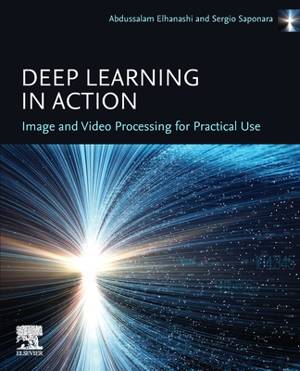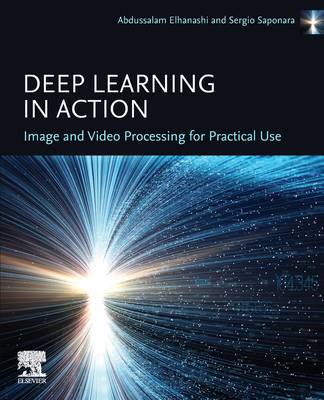
- Afhalen na 1 uur in een winkel met voorraad
- Gratis thuislevering in België vanaf € 30
- Ruim aanbod met 7 miljoen producten
- Afhalen na 1 uur in een winkel met voorraad
- Gratis thuislevering in België vanaf € 30
- Ruim aanbod met 7 miljoen producten
Zoeken
Deep Learning in Action: Image and Video Processing for Practical Use
Abdussalam Elhanashi, Sergio Saponara
Paperback | Engels
€ 254,45
+ 508 punten
Omschrijving
Artificial intelligence technology has entered an extraordinary phase of fast development and wide application. The techniques developed in traditional AI research areas, such as computer vision and object recognition, have found many innovative applications in an array of real-world settings. The general methodological contributions from AI, such as a variety of recently developed deep learning algorithms, have also been applied to a wide spectrum of fields such as surveillance applications, real-time processing, IoT devices, and health care systems. The state-of-the-art and deep learning models have wider applicability and are highly efficient. Deep Learning in Action: Image and Video Processing for Practical Use provides a comprehensive and accessible resource for both intermediate to advanced readers seeking to harness the power of deep learning in the domains of video and image processing. The book bridges the gap between theoretical concepts and practical implementation by emphasizing lightweight approaches, enabling readers to efficiently apply deep learning techniques to real-world scenarios. It focuses on resource-efficient methods, making it particularly relevant in contexts where computational constraints are a concern.
Specificaties
Betrokkenen
- Auteur(s):
- Uitgeverij:
Inhoud
- Aantal bladzijden:
- 300
- Taal:
- Engels
Eigenschappen
- Productcode (EAN):
- 9780443300783
- Verschijningsdatum:
- 6/06/2025
- Uitvoering:
- Paperback
- Formaat:
- Trade paperback (VS)
- Afmetingen:
- 194 mm x 235 mm
- Gewicht:
- 630 g

Alleen bij Standaard Boekhandel
+ 508 punten op je klantenkaart van Standaard Boekhandel
Beoordelingen
We publiceren alleen reviews die voldoen aan de voorwaarden voor reviews. Bekijk onze voorwaarden voor reviews.








